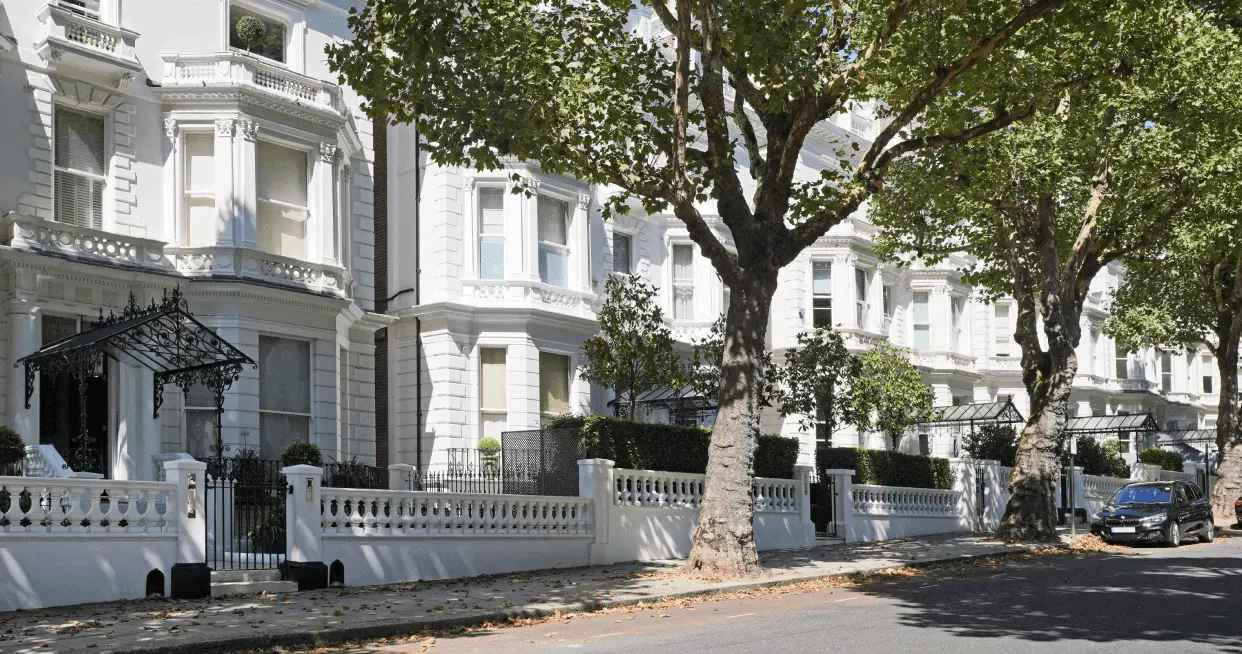How summer droughts encourage tree root drain damage
Did you know that a drought can affect your drainage system? It’s true. Trees trying to cope with long periods without rain can damage your drain pipes in two ways. As roots draw water from clay soils, the earth contracts, sometimes leading to small-scale subsidence. This can result in faults such as misaligned joints. Trees also take advantage of even the smallest of pipe leaks, as they put more energy into root growth where they can reach the moisture they need. In this article, we look at the reasons behind tree root drain damage (which can actually happen at any time of year), why a drought can speed up tree root ingress, and what you can do to protect against damage of a larger scale.

Is my property at risk from tree root damage?
If there’s a tree, or multiple trees, near your house, then root growth could affect your drainage system – but it all depends on the state of your drainage pipework. Tree roots won’t cause the initial damage, but they will exploit an existing fault, such as a crack or loose connection. If there’s water leaking from a fault in a pipe, nearby trees will naturally grow roots in that direction. Roots will also find their way inside.
Once root systems enter your pipe, they’ll open cracks further and create more damage. Debris will collect around them and reduce the flow rate, and this eventually stops waste from reaching the main sewers. If large quantities of water leak underground, this can create a sinkhole and cause subsidence in extreme cases.
Busting the myth: Some people think tree roots always grow deep into the soil, even reaching the water table. That simply isn’t true. According to the Arboricultural Association, tree roots tend to be shallow, with over 90 per cent of them resting within the top 60cm of soil. They instead grow horizontally, well past the branch spread – so they’re reliant on rainwater. It also means they’ll exploit leaks in damaged pipes when conditions are dry.
Which trees pose the biggest threat to my drains?
Sycamore trees are the most popular in London, and their roots can spread more than 50 feet from the trunk. English oak takes the number two spot, and just like the sycamore, its roots extend much further outward than downward. Silver birch comes in at number three, and while its roots aren’t known to be quite as aggressive, they can still cause problems when placed near a drain pipe in clay soil. Weeping willows in particular need a great deal of water, which is why they’re a staple around rivers, lakes and ponds.
Beware of bamboo! Running bamboo is known to be highly invasive. These roots move laterally, forming shoots in all directions to build a ‘bamboo grove’, and this makes them a problem in built-up and suburban areas. Clumping bamboo doesn’t spread like the running type, so it’s less likely to attack your drainage system.
If you’re thinking about planting trees in your garden, make sure they’re far enough away from buildings and pipes to pose a low risk. The further away they are, the less chance there’ll be of tree root drain damage.
Soil conditions and living in the South East
Clay soil can cause issues during a drought, mostly due the way it expands and contracts based on moisture levels. Once tree roots absorb what little moisture’s left, clay soils will shrink or ‘compact’. This can lead to a minor form of subsidence, which won’t affect your home’s foundations but could cause your pipes to misalign, increasing the chance of root-related damage.
The trouble with clay: Clay soil acts much like a sponge. The more water it holds, the greater its volume. When you take that water away, it shrinks down. This is known as ‘shrink-swell capacity’, and it’s why clay soils are also referred to as ‘expansive soils’. Soil only needs to have five per cent clay content to have some degree of shrink-swell capacity.
Many properties in London and the South East are built on clay soils, which means they’re at a higher risk of subsidence when there’s a drought. For this reason, homeowners in this area should think about what they can do to avoid tree root drain damage, especially after several weeks without rain.
What if roots have damaged my drainage system?
When your drains start to block up, you’ll usually notice that your sink or basin drains slowly. That’s not always the case with root ingress, because all of the water could be escaping underground. Bad smells may be a sign of damage, but the only sure-fire way to know is to get a professional in to check your drainage system.
If your system’s affected by tree root drain damage, don’t panic. Catching the problem early means the fault could be isolated. Now you can fix the issue before it has a chance to get worse!
About no-dig repairs: Water jetting is a relatively quick way to clear the pipe of roots and other built-up debris. Any cracks or faults the roots have exploited can be repaired from the inside with a patch. This avoids excavation work, saving you from the cost and hassle of digging up the landscape.
Our advice…
Aside from being mindful of the trees around your home, we recommend arranging a CCTV drain inspection. This simple survey lets an engineer check your system for tree roots, tiny cracks, misalignments and more. If there’s an issue, your engineer will be able to provide a reliable fix to prevent roots from entering the system.
Our CCTV drain inspections are priced at £250 plus VAT, giving you peace of mind at an affordable cost. Alternatively, you can ask us to work at an hourly rate if you’d specifically like us to search for tree root ingress.
In July 2022, the UK saw temperatures rise to 40-degrees C for the very first time. If this change in temperature is a sign of things to come, it’ll make tree root drain damage all the more likely. Why not get in touch for professional advice? Alternatively, you can simply book a survey to ensure your drains are ready for whatever the weather has in store.

Book a drainage engineer
Our experts are fully equipped to clear any blockage, including tree roots.
- One hour priority attendance
- A 24 hour emergency service
- Trade accredited experts
- Half-hour rates from £42.75 + VAT
- £10 off when you book online
Was this article helpful?
Think we could improve this article? Please let us know